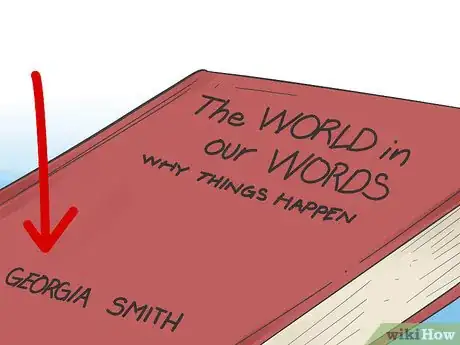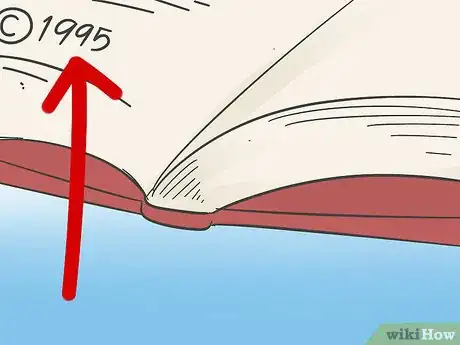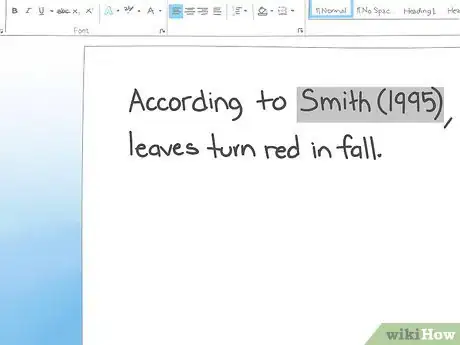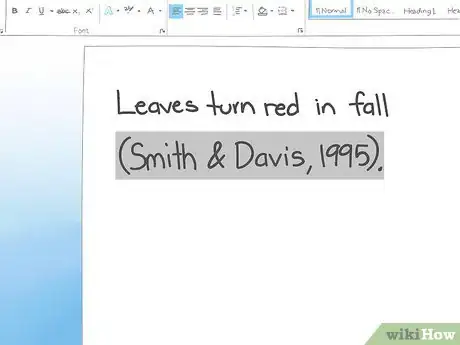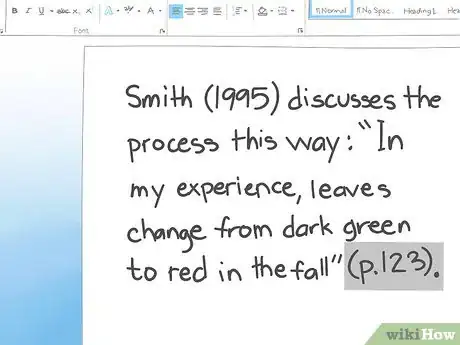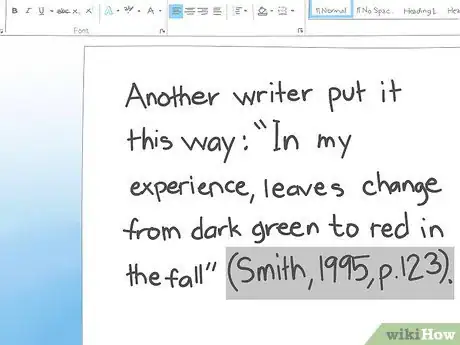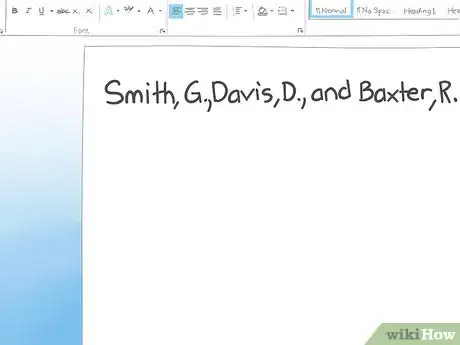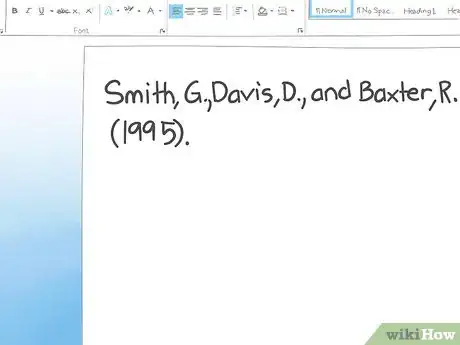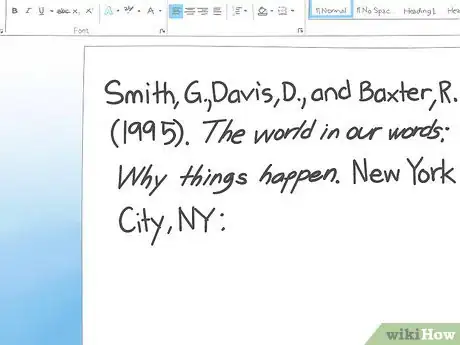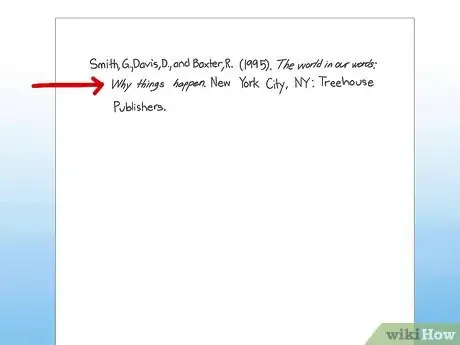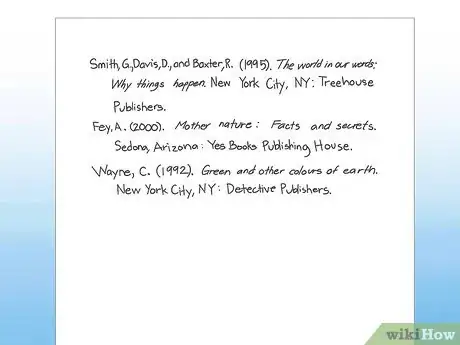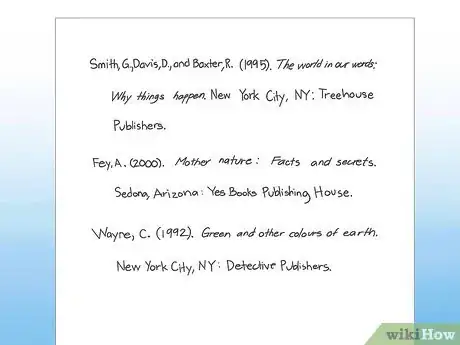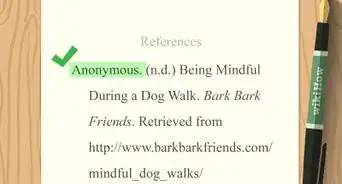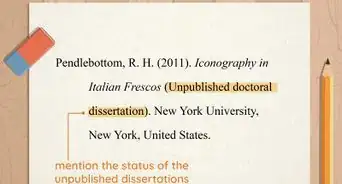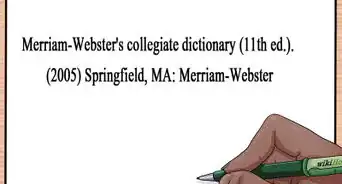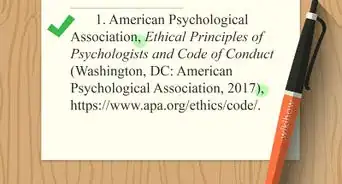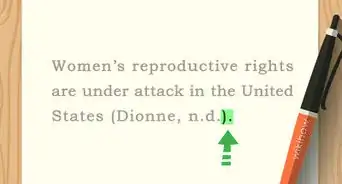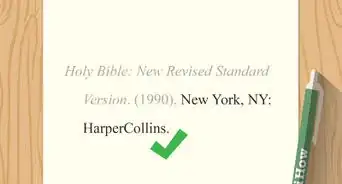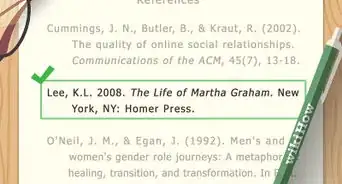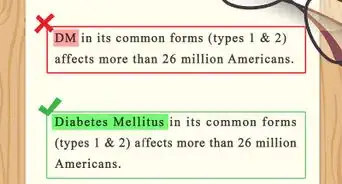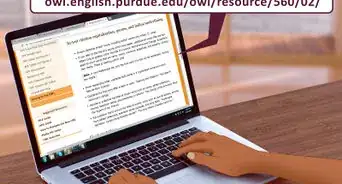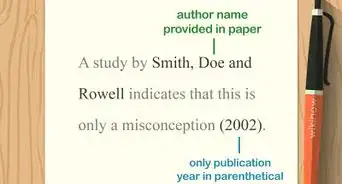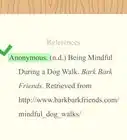wikiHow is a “wiki,” similar to Wikipedia, which means that many of our articles are co-written by multiple authors. To create this article, volunteer authors worked to edit and improve it over time.
This article has been viewed 32,430 times.
Learn more...
When you are writing an essay or an article and you use someone else's ideas, you must give them credit. Whether you are just putting their ideas in your own words or directly quoting them, you can give them credit by citing them as your source. If you don't give them credit, you are plagiarizing, which is ethically dishonest and can have consequences, such as getting a failing grade for the paper you are writing or even being fired from a job. The APA format was developed by the American Psychological Association for academics in the social sciences to use. APA encompasses a style of writing, not just citations, though this discussion will be limited to citations.
Steps
Making an In-text Citation for a Book in APA Format
-
1Look for your author. The author will be on the outside of the book or on the title page. It's ok if there is more than one author. For our example, let's say your author's name is Georgia Smith.
-
2Find the publication date of your book. The publication date should be on the back of the title page. Use the most recent date.
- For the example, let's say the book's publication date is 1995.
Advertisement -
3Choose how you will create your in-text citation. You have two basic ways that you can make a citation. You can name your author at the beginning of the sentence like this, using only the last name: “According to Smith (1995), leaves turn red in the fall.” Notice that in this instance, the date is in parentheses while “Smith” is not.
- The other way you can make an in-text citation is to put a citation at the end of the sentence without directly referencing the author in the sentence. This would look like the example: “Leaves turn red in the fall (Smith, 1995).” In this case, both the author and the date are in parenthesis, divided by a comma. Always put the author first and then the date.
-
4Cite multiple authors if your book was written by more than one person. If you have two authors, you can separate the authors' last names with an ampersand (&). If you have more than two authors, you separate them with commas and an ampersand.
- Example of in-text citation for two authors: “Leaves turn read in the fall (Smith & Davis, 1995).
- Example of in-text citation for three or more authors: “Leaves turn red in the fall (Smith, Davis, & Baxter, 1995).” With three to five authors, you always list all the authors the first time you cite the source. After that, you'll use “et al.” in this way: “(Smith et al., 1995).” “Et al.” just means “and others.”
- If you have six or more authors, you will always use the “et al.” version, even with the first citation you make.
-
5Write the page number if you are using a direct quote. In some instances, you'll also need the page number to explain where you found the information. You must have the page number if you are using a direct quote. Let's say you found this quote on page 123: “In my experience, leaves change from dark green to red in the fall.” You can cite this information in one of two ways. Whichever way you choose, always put the page number at the end of the sentence, even if you introduce the author and date at the beginning.
- Method 1: To use this quote, you would cite your source this way: “Smith (1995) discusses the process this way: 'In my experience, leaves change from dark green to red in the fall' (p. 123).” The page number is always last, and you put a “p” followed by period before it.
- Method 2: You could also write it this way: “Another writer put it this way: 'In my experience, leaves change from dark green to red in the fall' (Smith, 1995, p. 123).” Just like before, you put the information in parenthesis at the end of the sentence and separate it with commas.
-
6Make sure to put the punctuation in the correct places. When making an in-text citation with a direct quote, the end quotation mark will come before the citation, followed by a period, like the sentence from above:
- Example: “Another writer put it this way: “In my experience, leaves change from dark green to red in the fall” (Smith, 1995, p. 123).”
Making an APA Citation in a Reference List
-
1Begin with the author's name. Just like with an in-text citation, start your reference list citation with the author. However, when you make a citation in the reference list, you'll also need the author's initials, too. Put the author's last name first, followed by a comma and the initial(s) with periods. For example:
- One author: “Smith, G.”
- If you have more than one author, your citation would look like: “Smith, G., Davis, D., and Baxter, R.”
-
2Add the date of publication to the citation. Next, you'll put the date in parenthesis, followed by a period. Here's an example:
- “Smith, G. Davis, D., and Baxter, R. (1995).”
-
3Write out the full title of the book. Now, you're going to add in the title of the book. Unlike titles in other types of citations, in APA, you only capitalize the first word of the title, along with the first word of the subtitle. To introduce the subtitle, you use a colon. All the words in the title are italicized. In our example, it would look like this:
- “Smith, G. Davis, D., and Baxter, R. (1995). The world in our words: Why things happen.” In this case, the main title is “The World in Our Worlds,” while the subtitle is “Why Things Happen.” Follow the title with a period.
-
4Write down the city and state where the book was published. The city of publication is usually on the title page or the back of the title page. If there are multiple cities, pick the one closest to where you are. Use the postal abbreviation for the state, and don't use periods between the letters. Do use a comma between the city and state. If your book was published in New York City, the citation would be:
- “Smith, G. Davis, D., and Baxter, R. (1995). The world in our words: Why things happen. New York City, NY.”
-
5Add the name of the publishing company to your citation. Place a colon between the state that the book was published in, and the name of the publishing company. Let's say our book was published by Treehouse Publishers. Our example would therefore look like:
- “Smith, G. Davis, D., and Baxter, R. (1995). The world in our words: Why things happen. New York City, NY: Treehouse Publishers.”
Formatting Citations on a Computer
-
1Understand what a hanging indentation is. The main thing you need to worry about when formatting citations in your reference list is to make a hanging indention. That means that the first line of each citation will be all the way over to the left hand margin, but each line after that will be indented.
-
2Make sure all of your citations have hanging indentations if they are long enough. To make a hanging indention, highlight your set of citations, then use the ruler bar at the top of the page. Click on the bottom arrow only, and move it over so that it form a half-inch indentation.
-
3Double space your reference page. To make sure that your page is double spaced, highlight the text, and right-click on it.
- Find “Paragraph” in the list that appears. Under “Spacing” and “Line Spacing,” select “Double.”
